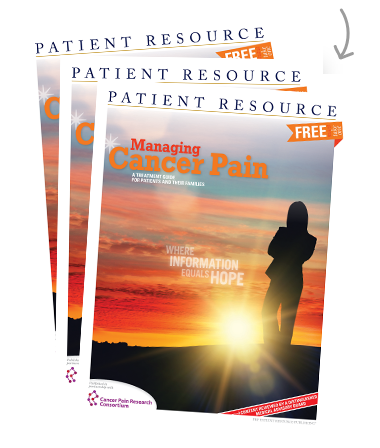Pain
Integrative oncology approaches
Integrative oncology addresses symptom control with therapies other than pain medications or procedures. These therapies historically have not been part of mainstream Western medicine. They belong to a group of therapies called complementary therapies, which are used by as many as 40 percent of people with cancer. However, it is essential to understand the difference between “complementary” and “alternative.” Complementary therapies are used to control symptoms and are used in combination with traditional cancer treatments; in contrast, alternative therapies are used instead of traditional cancer treatment, with the hope that they will cure the disease. Integrative oncology includes only complementary therapies that studies have shown to be beneficial and safe. It does not include alternative therapies.
The most commonly used integrative therapies for cancer-related pain include mind-body therapies, acupuncture, and manipulative and body-based therapies.
Mind-body therapies
The mind-body connection is real and can be powerful. With mind-body therapies, the brain, mind and body interact to promote health and well-being. These therapies have been found to be beneficial for people with cancer by improving quality of life, which can help reduce feelings of pain. Mind-body therapies include mindfulness meditation, guided imagery, yoga, tai chi and qigong.
Acupuncture
Acupuncture is the Chinese art of placing special needles in certain parts of the body; sometimes heat or electric pulses are applied to the needles. Studies have shown that acupuncture is effective in reducing pain in some people with cancer, and the therapy is generally safe.
Manipulative and body-based therapies
Manipulative and body-based therapies include massage therapies of various techniques, such as Swedish massage, shiatsu, tui na, reflexology, Ayurvedic massage, lymphatic drainage and myofascial release (see Table 1). These therapies, especially Swedish massage and reflexology, have reduced pain in people with cancer when used as one part of a pain management plan.
Table 1. Types of massages
| Massage type | Description | ||
| Ayurdevic massage | The entire body is vigorously massaged with large amounts of warm oil and herbs. | ||
| Lymph drainage therapy | An extremity with lymphedema is massaged to move excess fluid toward alternative pathways for drainage. | ||
| Myofascial release | Pressure is applied to areas in the foot, hands and ears that correspond to other parts of the body. | ||
| Shiatsu | Pressure is applied with the finger, thumb, palm, elbow or knee to specific areas of the body. | ||
| Swedish massage | Massage given with a combination of kneading, rolling, vibrational, percussive and tapping movements, with the application of oil. | ||
| Tui na | Massage given with pressing, rubbing, waving, shaking, percussion or manipulation; can be applied to be light and soothing or strong and invigorating. | ||
Choose therapies wisely
Complementary therapies are safe when they are provided by certified and/or licensed professionals who have experience working with people who have cancer. Talk to your doctor or another member of your treatment team for a referral to a reputable professional.
Beware of advertisements for diets or supplements that claim to help cure your cancer or relieve your cancer-related pain. These products have not been subjected to the rigorous scientific study that is necessary to ensure they are safe and effective for people with cancer. Talk to your doctor or other member of your treatment team before starting any special diets or taking any vitamin or herbal supplements.
Choosing complementary therapies can help you take a more active role in your care. Many of them are also effective at reducing stress and anxiety, which can help you cope with pain. But remember the importance of choosing safe therapies (see below). In addition, remember that these therapies are best used in combination with an established treatment plan, not instead of traditional treatment.
Choosing complementary therapies carefully
- Find out what scientific studies have been done on the safety and effectiveness of the therapy.
- Discuss the therapy with your doctor or other member of your treatment team before making a decision.
- Choose a complementary therapy practitioner as carefully as you would choose a doctor. Use only licensed and/or certified practitioners who have experience with people with cancer.
- Research dietary supplements or herbal products to make sure they do not interact with medications you take.
- Beware of terms like "scientific breakthrough," "miracle cure," "secret ingredient," or "ancient remedy."
- Consult only reputable sources of information.
- Tell your doctor about all the therapies you use.



